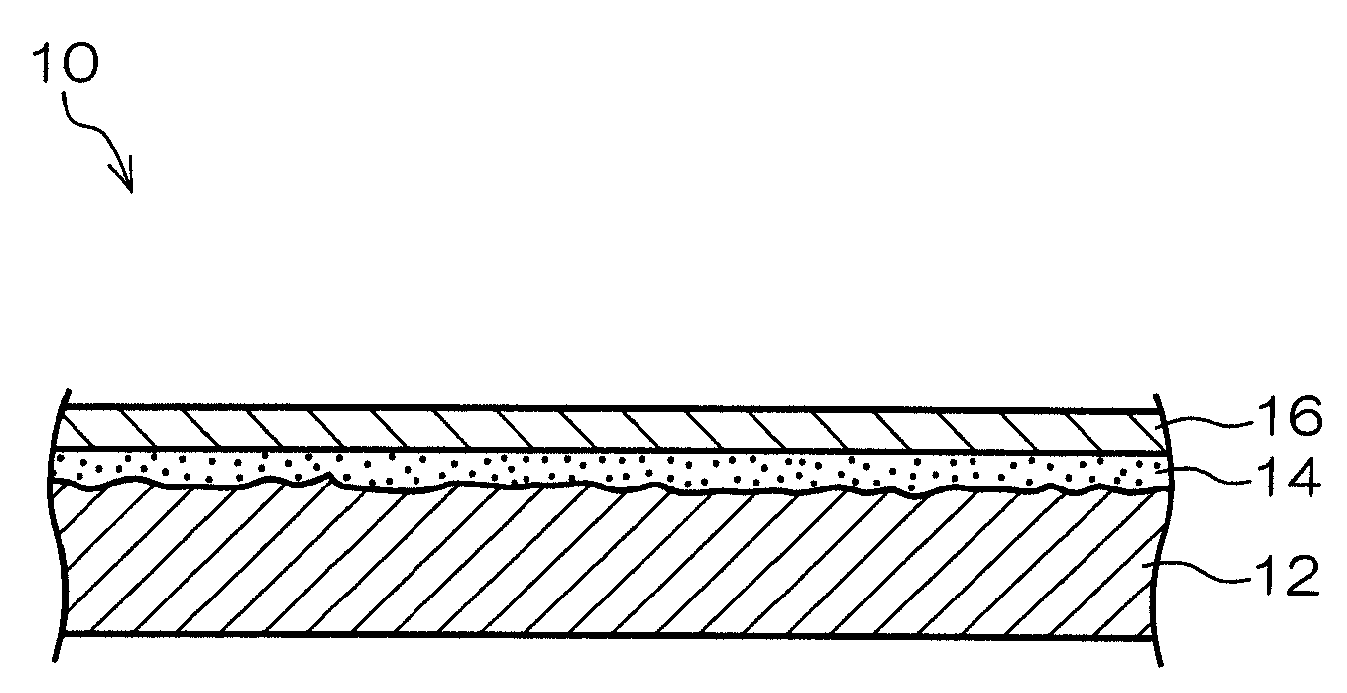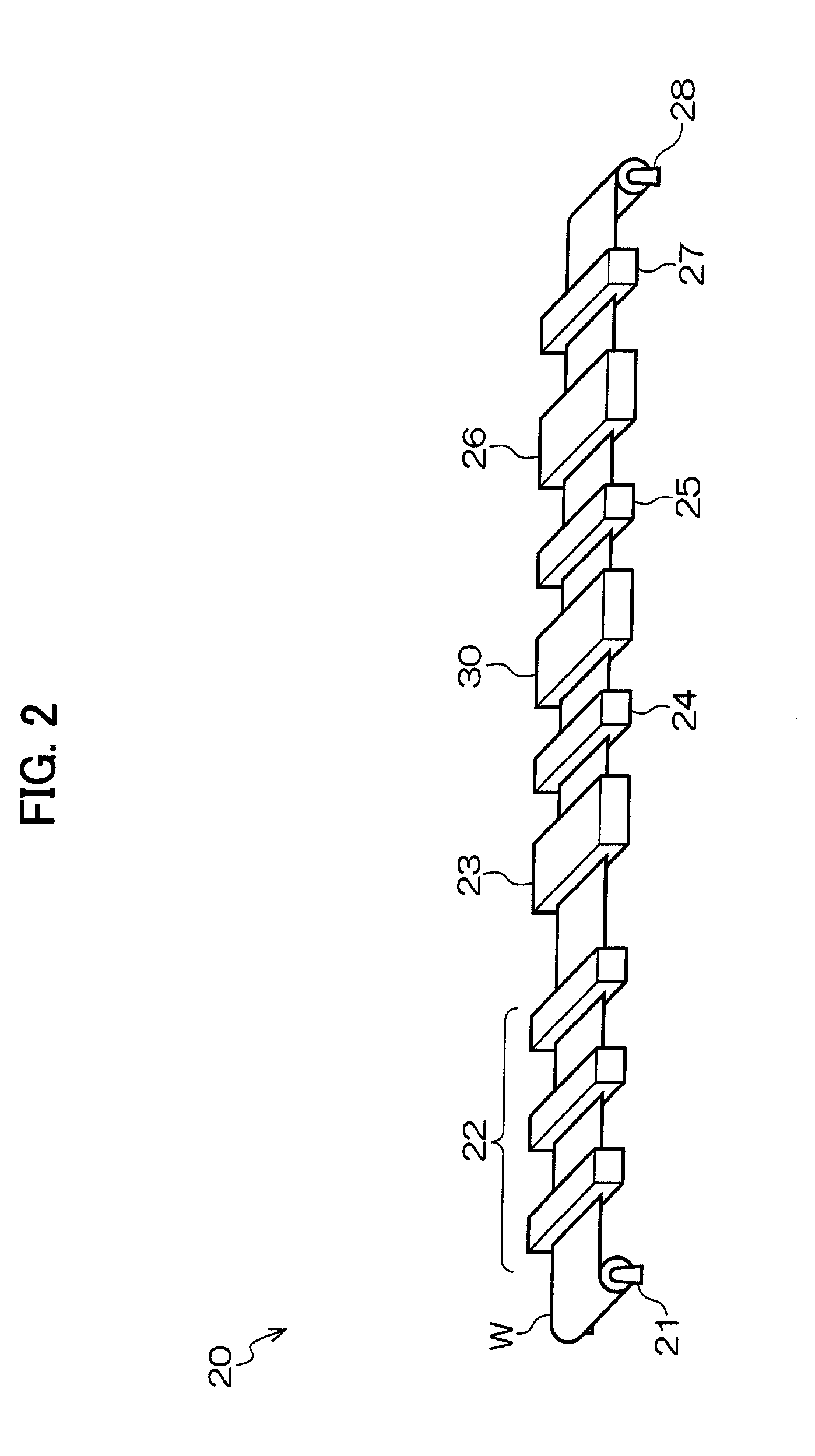Method for making positive photosensitive planographic printing plate
a planographic printing plate and photosensitive technology, applied in the field of making a can solve the problems of defective printing durability, large variation in the solubility of the exposed and unexposure areas, and excessive development failures, so as to reduce the variation in the sensitivity of the finished positive photosensitive planographic printing plate and reduce the drying temperature between areas.
- Summary
- Abstract
- Description
- Claims
- Application Information
AI Technical Summary
Benefits of technology
Problems solved by technology
Method used
Image
Examples
example
[0079]Examples of the method for making a positive photosensitive planographic printing plate according to the present invention are described below.
[0080]An aluminum web W having a width of 1030 mm and a thickness of 0.3 mm was subjected to surface treatment in the surface treatment unit 22, coated with a substrate in the substrate applying / drying unit 23, and then subjected to undercoat layer drying treatment in the undercoat layer applying / drying unit 30. The applied undercoat layer solution contained the acrylic resin having an alkali-soluble group and the solvent as described above, and the coating was dried under the following conditions at different temperatures and humidities. The results are shown in [Table 1]. The evaluation used a positive photosensitive planographic printing plate having a width of 1030 mm and a length of 800 mm which had been made by cutting the aluminum web W, a setter LUXCEL T-9000HS manufactured by Fujifilm Corporation, and a TAFFETA20 screen. A 50% ...
PUM
 Login to View More
Login to View More Abstract
Description
Claims
Application Information
 Login to View More
Login to View More - R&D
- Intellectual Property
- Life Sciences
- Materials
- Tech Scout
- Unparalleled Data Quality
- Higher Quality Content
- 60% Fewer Hallucinations
Browse by: Latest US Patents, China's latest patents, Technical Efficacy Thesaurus, Application Domain, Technology Topic, Popular Technical Reports.
© 2025 PatSnap. All rights reserved.Legal|Privacy policy|Modern Slavery Act Transparency Statement|Sitemap|About US| Contact US: help@patsnap.com



